Photos: China’s growing demand for American alfalfa hay
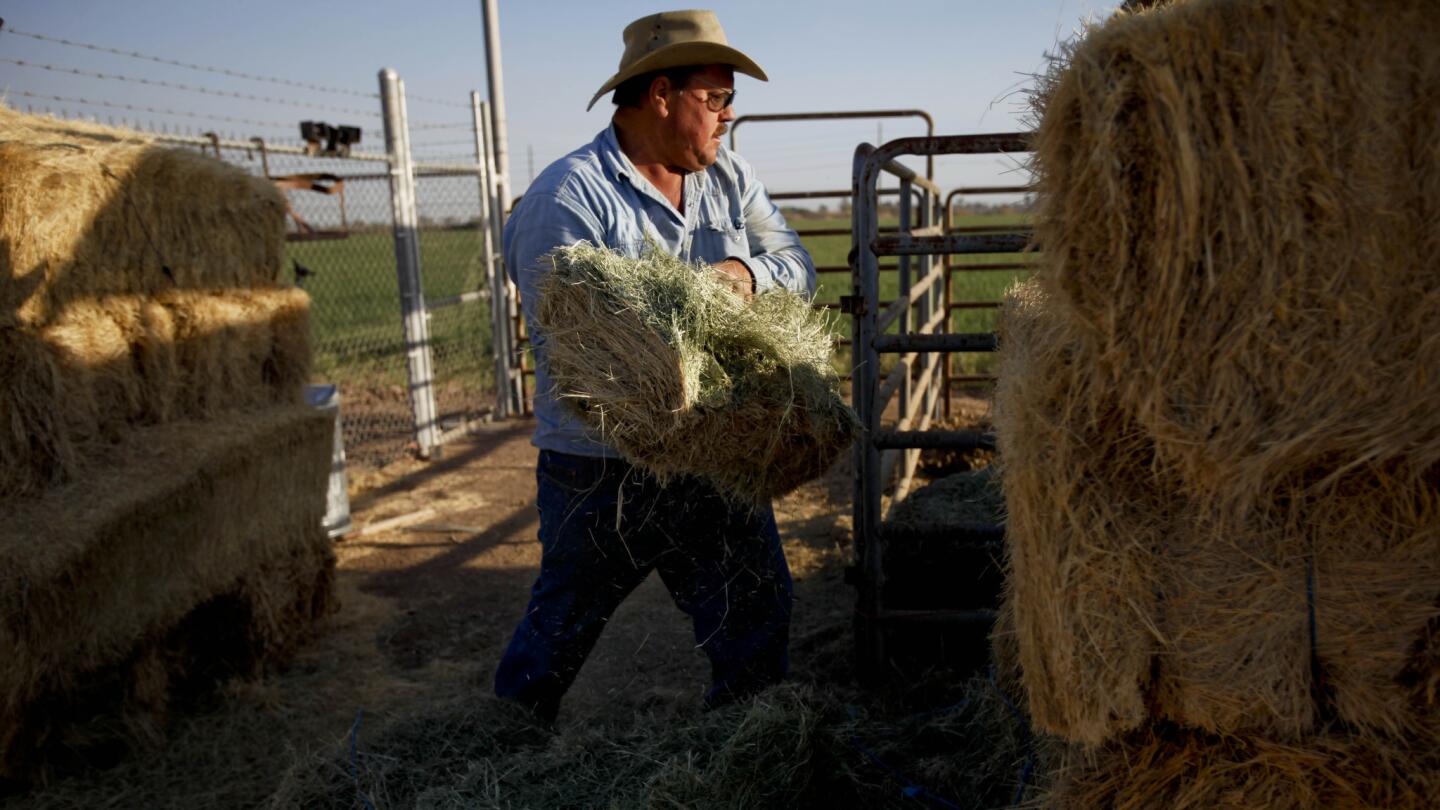
Ronnie Leimgruber tosses hay to a pet horse outside of Holtville in California’s Imperial Valley. Demand has never been greater for Leimgruber’s crop; prices for alfalfa hay have doubled in recent years to near-record highs. (Michael Robinson Chavez / Los Angeles Times)
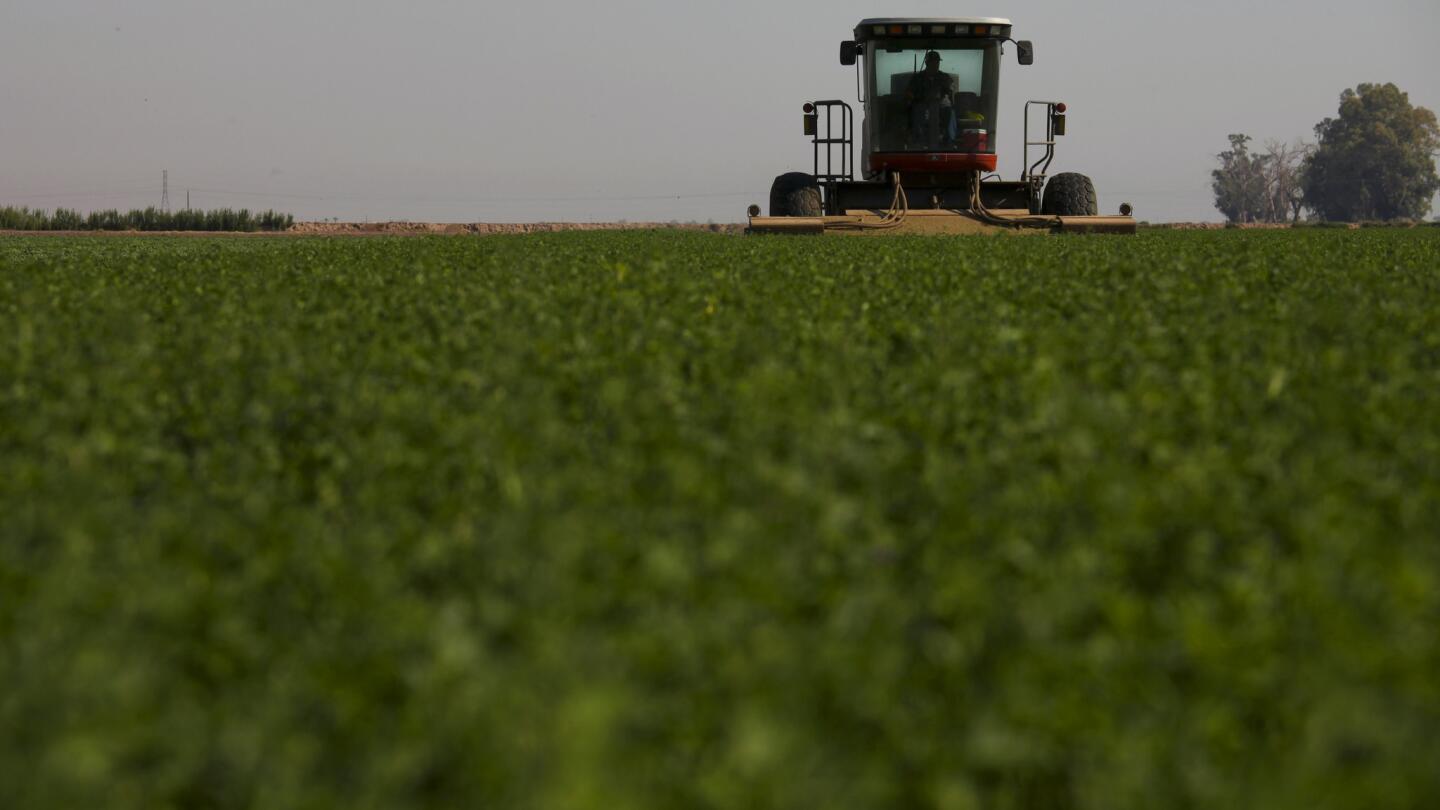
A mower cuts through a mature crop of alfalfa hay on one of Leimgruber’s fields. His good fortune traces across the Pacific to China’s booming dairy industry. (Michael Robinson Chavez / Los Angeles Times)
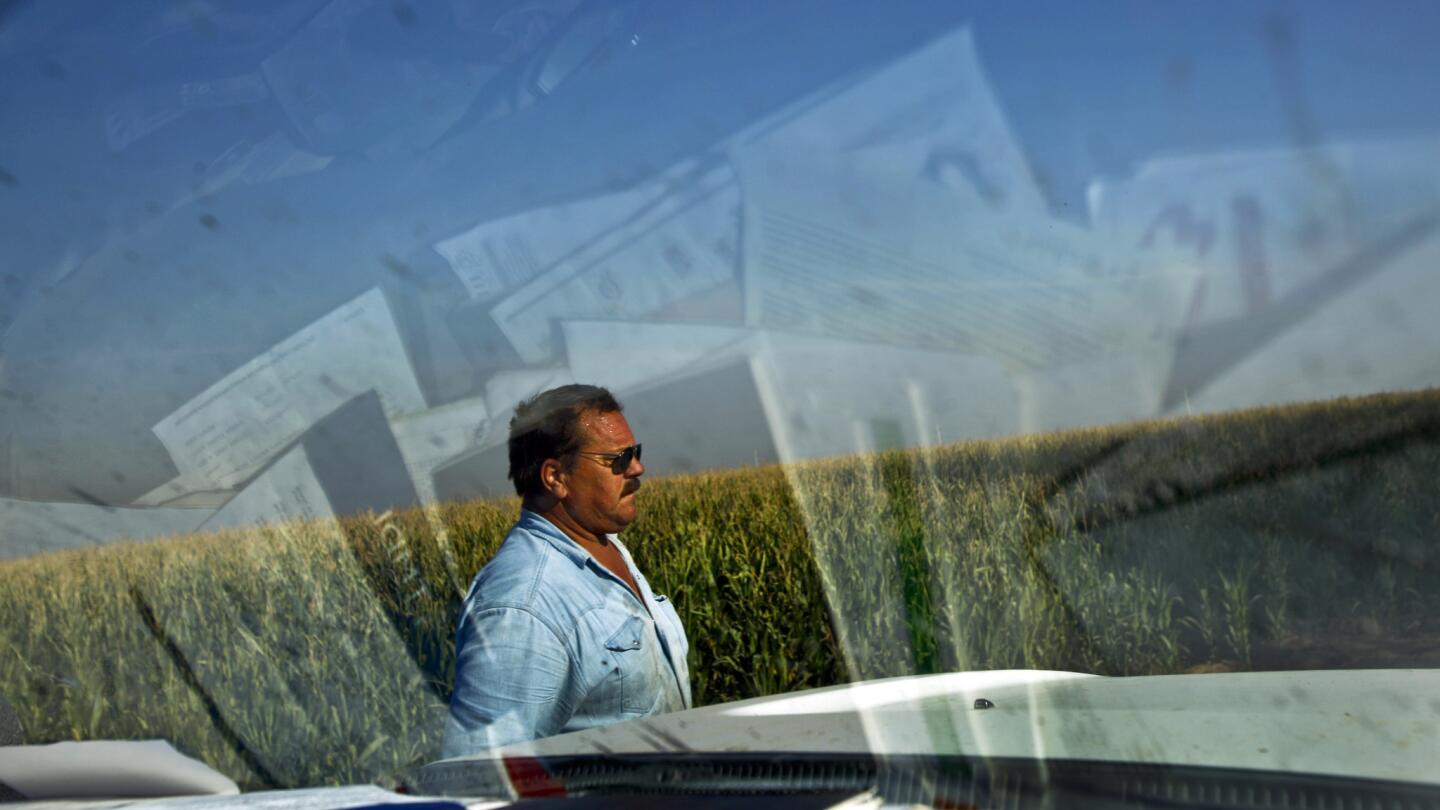
Leimgruber looks over one of his corn fields. He expects Chinese demand for alfalfa to grow exponentially as the country continues to scour the globe for food. (Michael Robinson Chavez / Los Angeles Times)
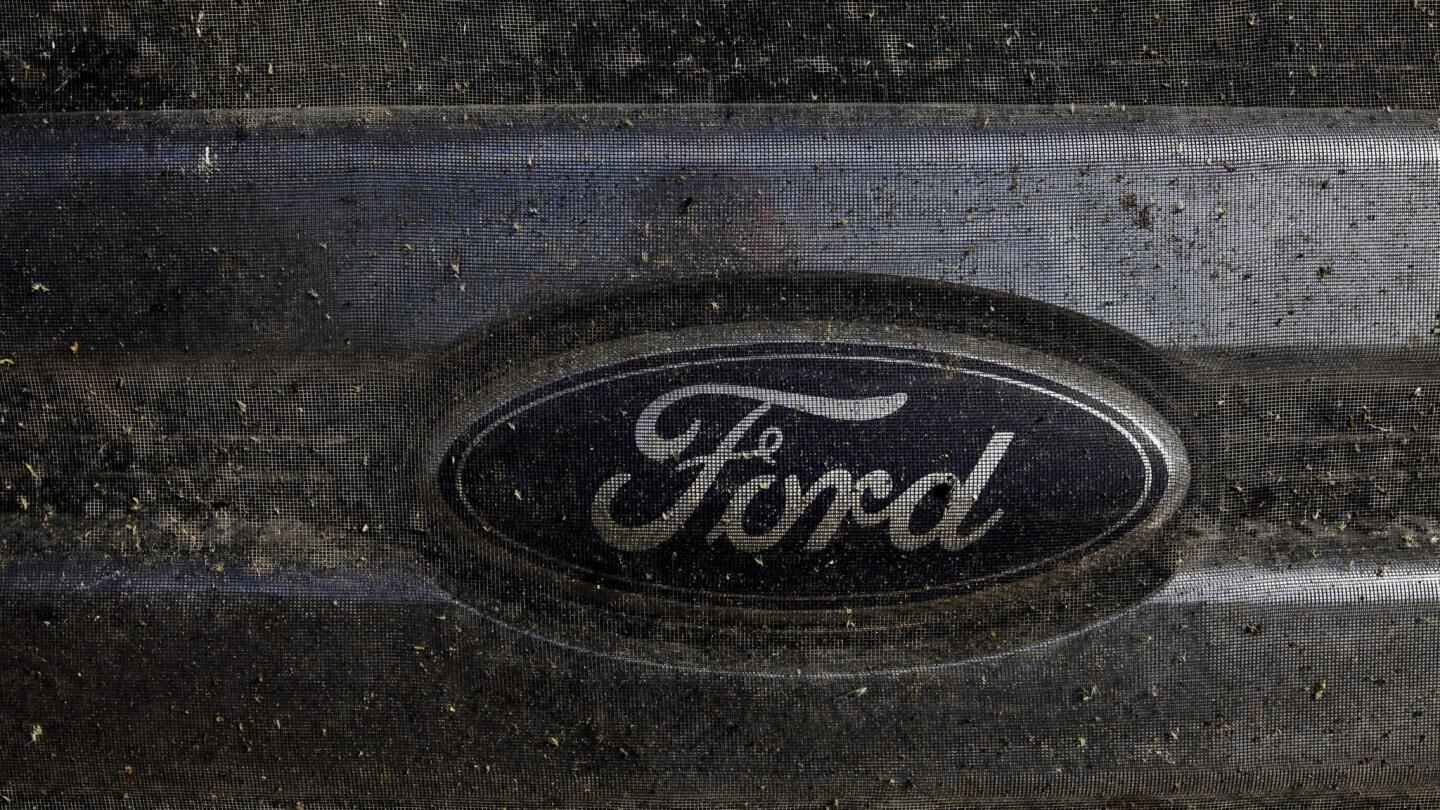
The front grille of Leimgruber’s truck is covered with insects, one of the consequences of farming in the Imperial Valley. (Michael Robinson Chavez / Los Angeles Times)
Advertisement
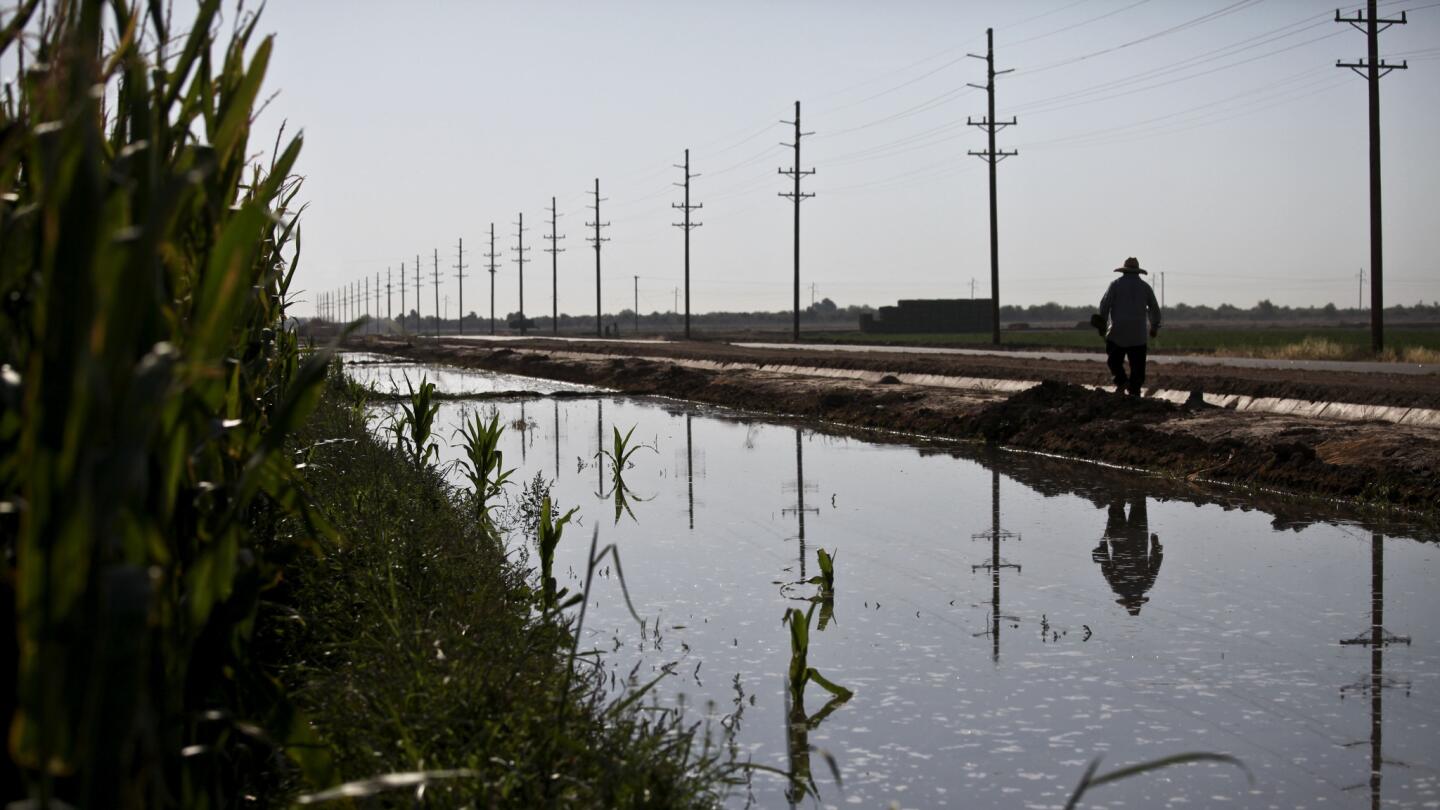
Overseas markets have played a big role in the Imperial Valley, a sprawling patch of irrigated desert hemmed in by the Salton Sea to the north and Mexico to the south. About one-third of the hay produced here is exported. (Michael Robinson Chavez / Los Angeles Times)
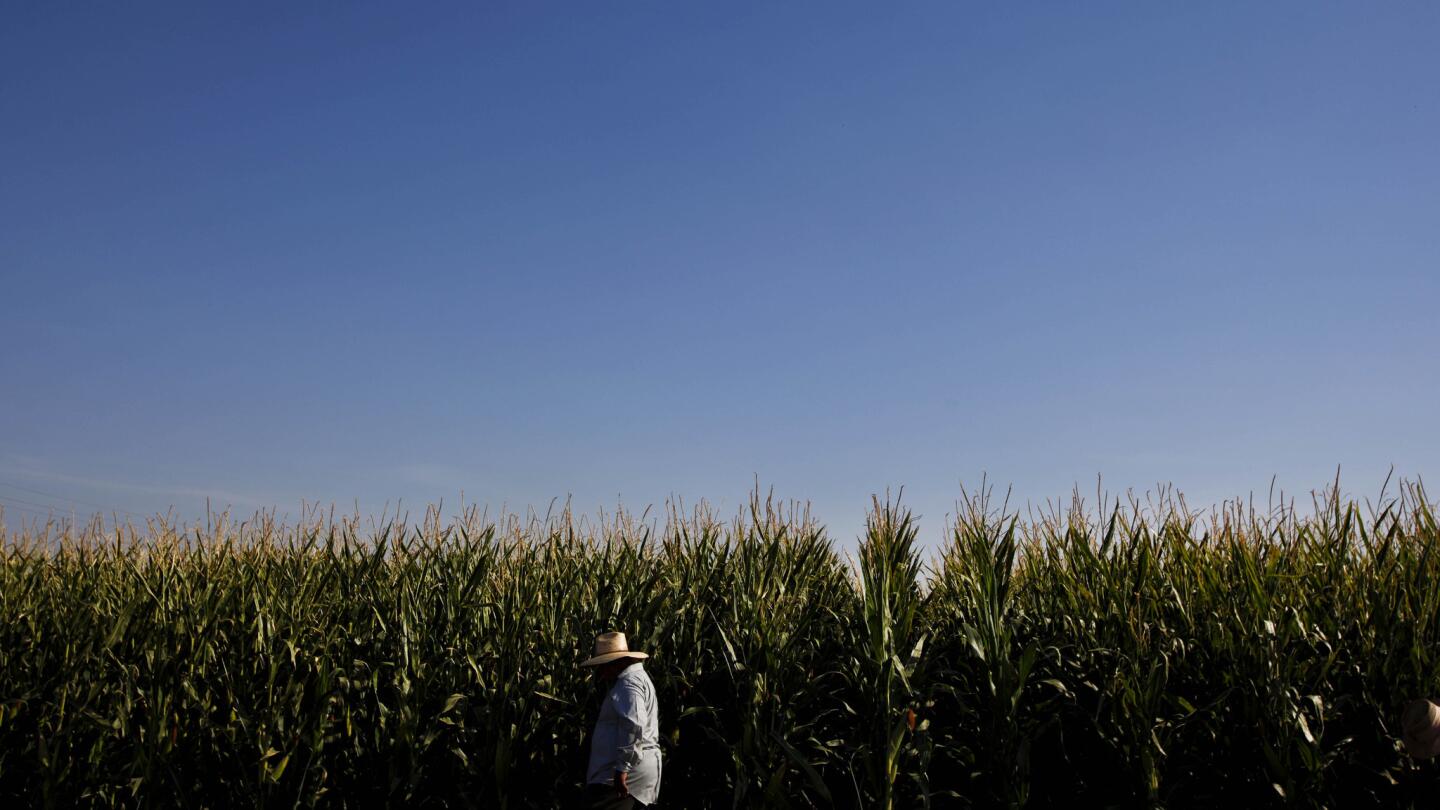
A worker walks past a corn field in the Imperial Valley. Alfalfa brokers regularly fly in from overseas, some staying at a local golf course and country club. (Michael Robinson Chavez / Los Angeles Times)
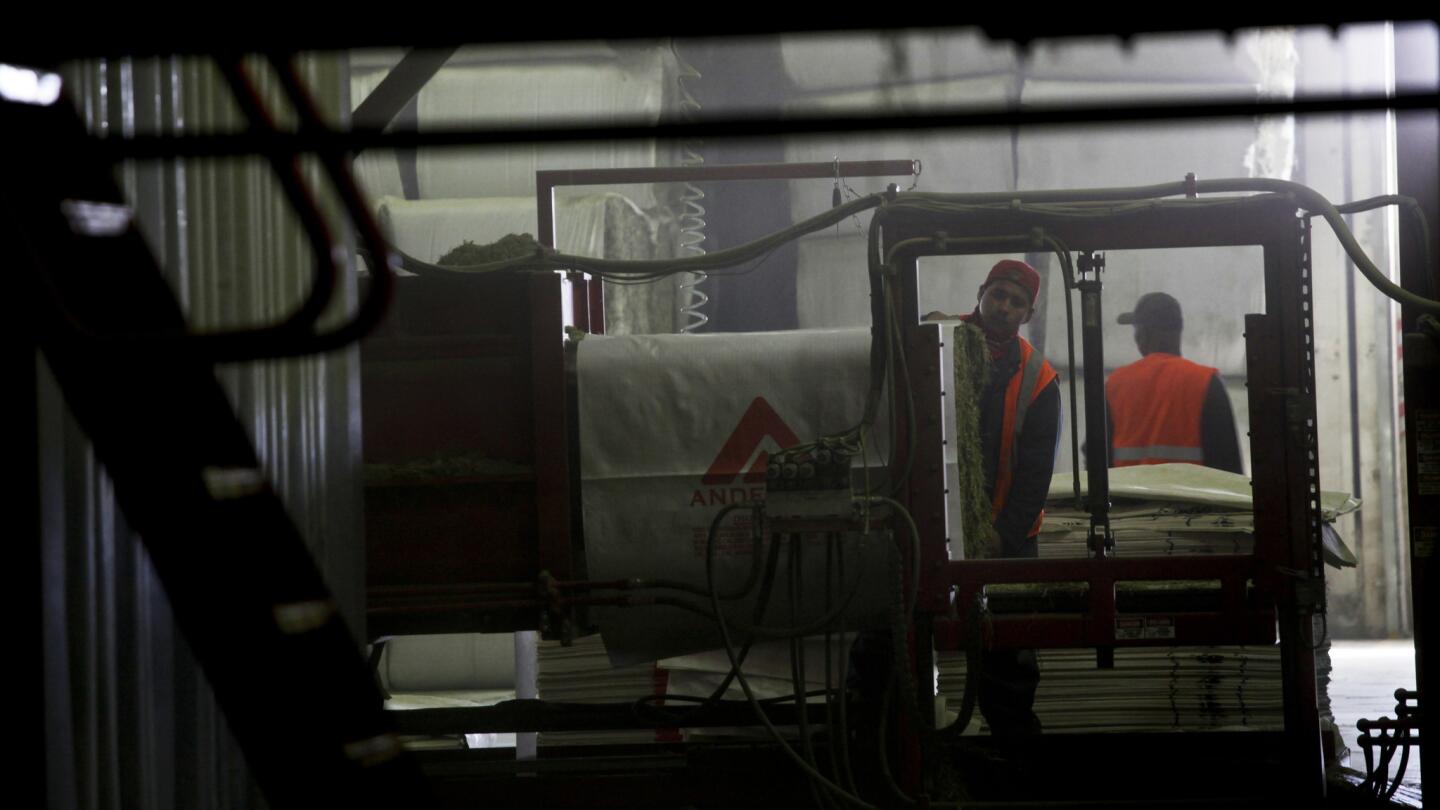
Anderson Hay & Grain Co. is a major alfalfa exporter that operates a warehouse the size of two Costco stores near the ports of Los Angeles and Long Beach. (Michael Robinson Chavez / Los Angeles Times)
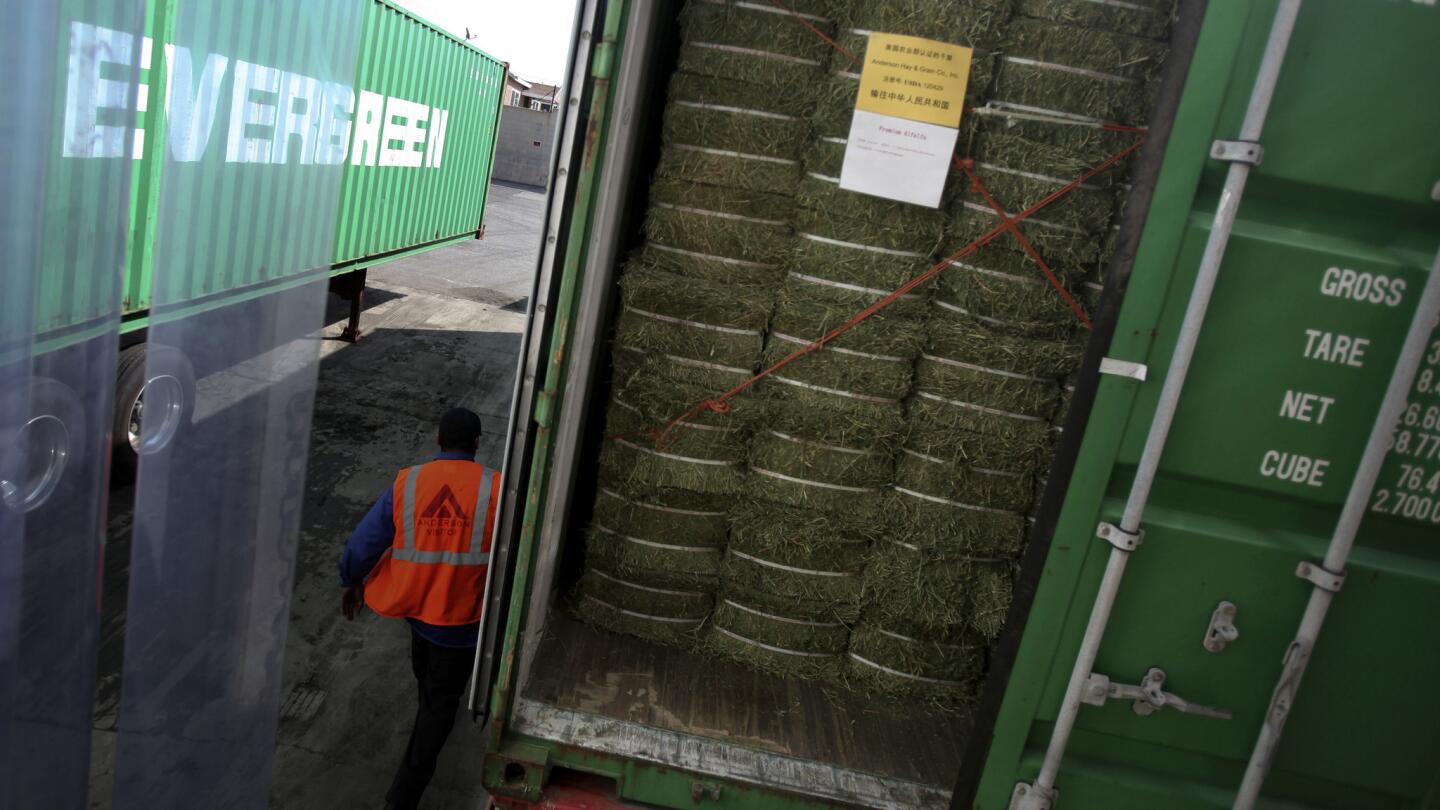
Half-ton bales of hay are stacked at Anderson Hay & Grain Co. “This industry has created a tremendous amount of jobs,” said President and Chief Executive Mark Anderson, who estimates that 10% of Western U.S. alfalfa ends up overseas. (Michael Robinson Chavez / Los Angeles Times)
Advertisement
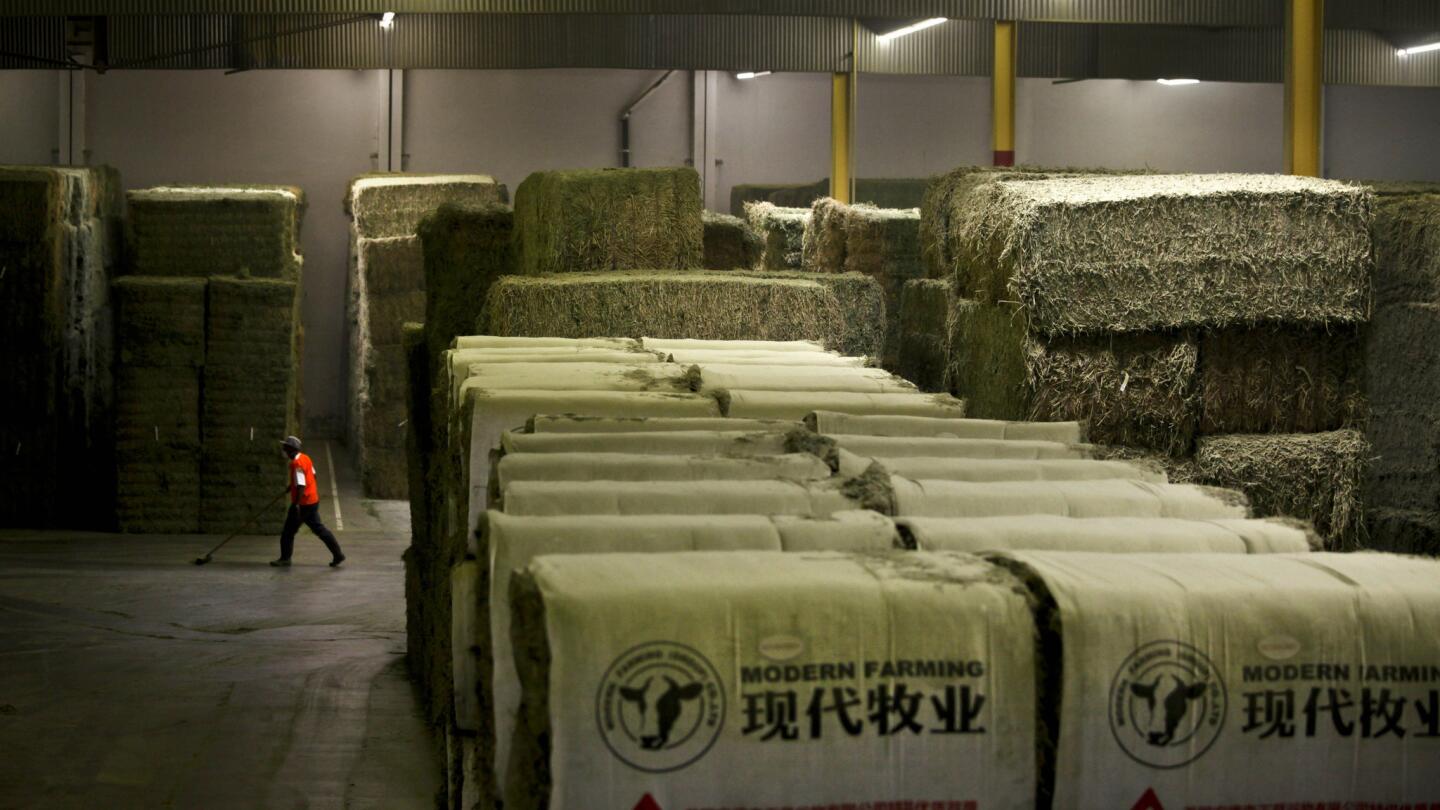
Bales of alfalfa at Anderson Hay & Grain Co. “Exports have saved a lot of agriculture in the U.S.” said Anderson. (Michael Robinson Chavez / Los Angeles Times)



